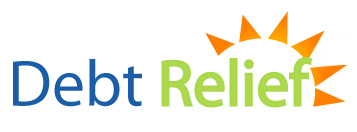Too much debt? Don't want to file bankruptcy?
Consider a Snowball Debt Reduction Plan.
Let's start with an hypothetical consumer with several unsecured debts:
| Account: | Balance | APR% | Minimum Payment |
| Visa | $10,000 | 21% | $200 |
| Master Card | $ 5,000 | 24% | $125 |
| Discover | $2,500 | 19% | $ 50 |
| Medical Bills | $1,500 | 18% | $ 75 |
| Gas Card | $1,000 | 22% | $ 35 |
| Totals | $20,000 | 20.8% | $485 |
This consumer has $20,000 of total unsecured debt at an average APR (Annual Percentage Rate) of almost 21%, and a total minimum monthly payment of $485.
But, let's do a little math:
I know that each credit card calculates interest a little differently, but just to keep our hypothetical simple...
$20,000 x 21% = $4,200 of annual interest divided by 12 months = $350
So when this consumer sends in a total of $485 each month, $350 is going to interest and only $135 is going to reduce the principal!!!!
It doesn't take a genius to figure that at this rate, it's going to take many, many years and THOUSAND OF DOLLARS IN INTEREST AND FEES to finally pay off these debts.
Now, let's say that this consumer can find an extra $75 per month to put towards paying off these debt more quickly.
By the way...if you are serious about reducing debt, how about making some changes in your lifestyle?
Here's a thought... At about $3.50 per coffee, if you stop by your local Starbucks daily, you are spending at least $75/month (or more!). There's the $75 you could put towards the plan...I'm just sayin'.
OK, I'm back down from my soapbox.
In a SNOWBALL DEBT REDUCTION PLAN, your are going to sort your debts by balance, starting with the lower balance first.
Some advocate starting with the largest APR in a Snowball Debt Reduction Plan, but I agree with experts like Dave Ramsey, who believes that by starting with the lowest balance first, you get to see progress, more quickly, and that really helps you keep going!
Then, you are going to add the $75 to the normal minimum payment of the first debt.
So, let's sort these debts like this:
| Account: | Balance: | APR: | Minimum Payment: |
| Gas Card | $ 1,000 | 22% | $110 (35+75) |
| Medical Bills | $ 1,500 | 18% | $ 75 |
| Discover | $ 2,500 | 19% | $ 50 |
| Master Card | $ 5,000 | 24% | $ 125 |
| Visa | $ 10,000 | 21% | $200 |
| Totals | $ 20,000 | 20.8% | $ 560 |
The "snowball" is that as you add the extra amount (in this case $75) to the first debt, and it is finally paid off, now you add the $75 plus the $35 you were paying on the first debt to the second debt.
In our example, that would be the MEDICAL BILLS. So, this total payment is now $75 (extra) plus $35 plus $75 = $185. Get the idea?
You keep the "snowball" payment growing as each debt is paid off.
In this example, the consumer used the snowball debt reduction calculator to pay off all of the debts in 54 months rather than an average of 120 months or more, if only the minimum payment was made!
Check out for yourself:
Sample Snowball Debt Reduction Spreadsheet
You are going to need to track your progress and there are several "Snowball Debt Calculators" out there.
Here is a FREE, Snowball Debt Calculator that you can download.
But if you are not able or barely able to meet the minimum payments required by your debts, perhaps you should consider a DEBT SETTLEMENT PROGRAM.
In a Debt Settlement Program, you will have ONE LOWER MONTHLY PAYMENT and settle your debts for 50% or in some cases, even lower!
We have prepared a FREE, INFORMATIONAL BOOKLET that will explain the details.
Order yours today!





